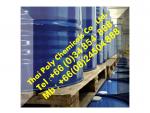Zinc Oxide, ZnO, ซิงค์ออกไซด์, ซิงก์ออกไซด์, ซิ้งออกไซด์ |
฿1 |
|
ชื่อผู้ประกาศ : อัศวิน เบอร์โทรศัพท์ : 034854888, 034496284 โทรศัพท์มือถือ : 0800160016 ที่อยู่ : 36/5 ม.9 ต.นาดี อ.เมืองสมุทรสาคร ร้าน TPCC |
ผลิตและจำหน่าย
Zinc Oxide 99.50 %min, Zinc Oxide, ZnO หรือ ซิงค์ออกไซด์, ซิงก์ออกไซด์ ขนาดบรรจุภัณฑ์ 25 kg ต่อ ถุง สอบถามข้อมูลเพิ่มเติมได้ที่ ฝ่ายขาย
บริษัท ไทยโพลีเคมิคอล
จำกัด
โทรศัพท์: 034-854888 , 034-496284
มือถือ : 082-4504888 , 08-00160016
โทรสาร: 034-854899 , 034-496285
เว็ปไซต์ : www.thaipolychemicals.com
อีเมลล์1 : thaipolychemicals@hotmail.com
อีเมลล์2 : info@thaipolychemicals.com
Keywords :
Zinc Oxide,
Zn Oxide, ZnO, ซิงค์ออกไซด์, ซิงก์ออกไซด์, ซิ้งออกไซด์,
ซิงออกไซด์, สารกันแดด, ซิงค์อ๊อกไซด์, ซิงก์อ๊อกไซด์, ซิ้งอ๊อกไซด์, ซิงอ๊อกไซด์,
Descriptions :
Zinc
oxide 99.5% is used in following industries rubber,pain ,medicines, printing
ซิงค์ออกไซด์(ZnO)
เป็นสารประกอบที่เป็นผลึกไม่มีสี ไม่ละลายในน้ำ
มีความหนาแน่น 5.7
กรัม/ตารางเซนติเมตร และเมื่อนำซิงค์ออกไซด์ไปอบ มันจะกลายเป็นสีเหลืองแต่ไม่ละลาย
มันจะละลายได้ก็ต่อเมื่อผ่านอุณหภูมิที่สูงกว่า 1,800?C เลยทีเดียว
ซิงค์ออกไซด์เป็นสารแอมโฟเทอริกที่ทำละลายในกรด อาทิ เกลือซิงค์ อัลคาไลน์ และสารละลายในน้ำอย่างแอมโมเนีย เป็นต้น ซิงค์ออกไซด์ถูกนำมาใช้เป็นตัวกระตุ้นปฏิกิริยาเคมีในอุตสาหกรรมยาง เช่น
Application :
For rubber,pain ,medicines, printing, ink ,cable
,electronics ,papermaking ,enamel, match, cosmetic and other chemical industry
PACKING : 25 kg/bag
การใช้ประโยชน์ Zinc Oxide, ซิงค์ออกไซด์,
ซิ้งออกไซด์, ดังนี้
เป็นตัวเร่งหรือกระตุ้นปฏิกิริยาในอุตสาหกรรมยาง
อุตสาหกรรมปิโตรเคมี อีกทั้งยังเป็นวัตถุดิบชนิดแรกๆ ที่ถูกเลือกนำมาใช้ในการผลิตยางล้อรถยนต์, ยางล้อเครื่องบิน,
สายเคเบิ้ล, และเซรามิก, ใช้เป็นตัวเพิ่มแรงดึง, การยึดเกาะ, การอัดแน่นและความสะอาดของสินค้า ในอุตสาหกรรมยางใส, สีและสารเคลือบ, เป็นสารยังยั้งหรือฆ่าจุลชีพและแบคทีเรีย,
สารระงับกลิ่นกาย, สารปลอดเชื้อในทางการแพทย์,
สารฆ่าเชื้อแบคทีเรียในแก้วและเซรามิก, อุตสาหกรรมไฟฟ้า,
เครื่องมือและอุปกรณ์ไฟฟ้า, วิทยุ, หลอดฟลูออเรสเซนต์, รีโอสแตต (rheostat), วัสดุที่ใช้ในหลอดภาพ - ฟอสเฟอร์ (phosphor), สารป้องกันแสงแดดในเครื่องสำอางหรือสารฆ่าเชื้อแบคทีเรีย, Zinc Oxide เป็นสารกันแดดที่มีคุณสมบัติในการสะท้อนรังสี
เหมือนกับ Titanium Dioxide, ข้อดีของ Zinc oxide คือปกป้องผิวจากรังสีได้อย่างครบถ้วน ช่วยต้านการระคายเคือง
มีฤทธิ์ฆ่าเชื้อแบบอ่อนๆ ช่วยลดผดผื่นแพ้ จึงเป็นสารกันแดดที่เหมาะกับผิวแพ้ง่ายมากที่สุด TEL. 034854888, 034496284, 0800160016,
0824504888
Zinc Oxide, ZnO, ซิงค์ออกไซด์,
ซิงก์ออกไซด์, สังกะสีออกไซด์
ZnO หรือ
ซิงค์ออกไซด์เป็นที่รู้จักในนาม คาลาไมล์ นอกจากฆ่าแบคทีเรียแล้วยังช่วยป้องกันและยับยั้งการแบ่งเซลล์ของแบคทีเรีย
สังกะสีออกไซด์ (Zinc Oxide) ปกป้องผิวจากแสงแดดได้สมบูรณ์ที่สุด
สังกะสีออกไซด์ (Zinc Oxide) เป็นสารอนินทรีย์ที่นำมาใช้ปกป้องและรักษาผิวหนังมานานนับศตวรรษ
ในช่วงสงครามโลกทั้ง 2 ครั้ง
กระทรวงกลาโหมของสหรัฐอเมริกามอบสังกะสีออกไซด์ให้แก่นักบินสำหรับใช้ป้องกันการถูกแดดเผากรณีที่รอดชีวิตจากเครื่องบินตก นอกจากนี้ในกลุ่มนักเทนนิสและเจ้าหน้าที่รักษาความปลอดภัยตามสระน้ำจะใช้สังกะสีออกไซด์ทาจมูกและริมฝีปาก อย่างไรก็ตามในช่วงนั้นการใช้สังกะสีออกไซด์ยังอยู่ในวงจำกัด
สารอนินทรีย์ (Inorganic Chemicals) ที่ใช้ในการผลิตครีมกันแดดมีหลายชนิด
ได้แก่ สังกะสีออกไซด์ ไททาเนียมไดออกไซด์ และไอออนออกไซด์ สารอนินทรีย์เหล่านี้นอกจากจะช่วยปกป้องผิวจากแสงแดดแล้ว ยังมีข้อดีที่แตกต่างจากสารอินทรีย์ก็คือไม่ซึมเข้าสู่ผิวหนังจึงไม่ทำให้เกิดอาการแพ้ ในจำนวนสารอนินทรีย์เหล่านี้
ครีมกันแดดหลายยี่ห้อ
มักโฆษณาว่าสามารถป้องกันได้ทั้ง UVB และ UVA โดย UVB เป็นรังสีที่ทำให้ผิวไหม้เกรียม ขณะที่ UVA จะทำให้ผิวเหี่ยวย่นตกกระและมีสีคล้ำขึ้น
ซึ่งรังสีทั้งสองชนิดนี้เป็นรังสีอุลตราไวโอเล็ตที่มีส่วนทำให้เกิดมะเร็งผิวหนัง
การพัฒนาครีมกันแดดในอดีตมักมุ่งหยุดอาการผิวไหม้ (sunburn) ซึ่งเกิดจากรังสี UVB เท่านั้น โดยผู้บริโภคที่ใช้ครีมกันแดดประเภทนี้ เมื่อไม่มีอาการผิวไหม้ซึ่งเป็นการเตือนภัยของร่างกายกรณีที่ได้รับรังสี UVB มากเกินไปทำให้เข้าใจผิดว่าไม่เป็นไรถ้าจะอยู่กลางแสงแดดต่อไปเป็นเวลานานๆ
จึงเปิดโอกาสให้ร่างกายได้รับรังสี UVA มากเกินไป กรณีเช่นนี้เป็นคำอธิบายอย่างหนึ่งถึงสาเหตุที่ปริมาณการเกิดมะเร็งผิวหนังเพิ่มมากขึ้นแม้ว่าสังกะสีออกไซด์จะสามารถป้องกันได้ทั้งรังสี
UVA และ UVB สมบูรณ์ที่สุดในขณะนี้ก็ตามแต่ก็ยังไม่ถูกนำไปใช้เป็นส่วนผสมของครีมกันแดดทุกยี่ห้อ
เนื่องจากการค้นพบประสิทธิภาพของสังกะสีออกไซด์เพิ่งเกิดขึ้นไม่นานมานี้จึงยังไม่แพร่หลาย
และผู้บริโภคยังฝังใจกับครีมกันแดดที่ทำจากสารอินทรีย์ที่มีการโฆษณามานาน
สาเหตุอีกประการหนึ่งคือ สังกะสีออกไซด์จะกลายเป็นสีขาวเมื่อใช้ในปริมาณมากๆ
ดังนั้นผู้ผลิตเครื่องสำอางจึงจำเป็นต้องมีการศึกษาวิจัยเรื่องปริมาณสังกะสีออกไซด์ที่เหมาะสมเพื่อแก้ปัญหานี้ต่อไปครีมกันแดดที่มีสังกะสีออกไซด์เป็นส่วนผสมหลักเริ่มออกวางตลาดเมื่อไม่กี่ปีมานี้
บางครั้งสังกะสีออกไซด์ก็เป็นเพียงส่วนผสมเดียวของครีมกันแดด
แต่ส่วนใหญ่มักจะถูกนำไปผสมร่วมกับสารอินทรีย์อื่นด้วย คาดว่าในอนาคต
จะมีผลิตภัณฑ์จำนวนมากที่มีส่วนผสมของสังกะสีออกไซด์ออกวางตลาดมากขึ้น เพราะมีแนวโน้มสูงว่าสารปกป้องผิวจากแสงแดดจะนำมาใช้ร่วมกับผลิตภัณฑ์ถนอมผิวอื่นๆ
เช่น มอยส์เจอร์ไรเซอร์ หากเป็นเช่นนี้ก็จำเป็นอย่างยิ่งที่จะต้องใช้ส่วนผสม เช่น
สังกะสีออกไซด์ ที่มีทั้งประสิทธิภาพและไม่ระคายเคืองต่อผิวซิงค์ออกไซด์ (ZnO) เป็นสารประกอบที่เป็นผลึกไม่มีสี
ไม่ละลายในน้ำ มีความหนาแน่น 5.7 กรัม/ตารางเซนติเมตร
และเมื่อนำซิงค์ออกไซด์ไปอบ มันจะกลายเป็นสีเหลืองแต่ไม่ละลาย ซิงค์ออกไซด์เป็นสารแอมโฟเทอริกที่ทำละลายในกรด อาทิ เกลือซิงค์ อัลคาไลน์
ซิงค์ออกไซด์ถูกนำมาใช้เป็นตัวกระตุ้นปฏิกิริยาเคมีในอุตสาหกรรมยาง
เช่น ยางคลอโรพรีน (chloroprene rubber) และใช้ในการผลิตน้ำหอม, เครื่องสำอาง, ยา เป็นต้นนอกจากนี้ซิงค์ออกไซด์ยังถูกนำมาใช้ในการผลิตเม็ดสีและเป็นตัวเร่งปฏิกิริยาในการสังเคราะห์เมทานอลในอุตสาหกรรมเคมีต่างๆ
ด้วยZinc oxide is an inorganic compound with the formula ZnO
ZnO is a white powder that is
insoluble in water, and it is widely used as an additive in numerous materials
and products including rubbers, plastics, ceramics, glass, cement, lubricants, paints, ointments, adhesives, sealants, pigments, foods (sourceof Zn nutrient), batteries, ferrites, fire retardants, and first-aid tapes. It
occurs naturally as the mineral zincite, but most zinc oxide is produced
synthetically.In materials science, ZnO is a
wide-bandgap semiconductor of the II-VI semiconductor group (since oxygen was semiconductor has several favorable properties, including good transparency, high electron mobility, wide bandgap, and strong room-temperature luminescence. Those properties are used in emerging applications for transparent electrodes in liquid crystal displays, in energy-saving or heat-protecting windows, and in
Structure
Zinc oxide crystallizes in two
main forms, hexagonal wurtzite and cubic zincblende. Thewurtzite structure is most stable at ambient conditions and thus most common.
The zincblende form can be stabilized by growing ZnO on substrates with cubic
lattice structure. In both cases, the zinc and oxide centers are tetrahedral,
the most characteristic geometry for Zn(II).In addition to the wurtzite and
zincblende polymorphs, ZnO can be crystallized in the rocksalt motif at
relatively high pressures about 10 GPaHexagonal and zincblende
polymorphs have no inversion symmetry (reflection of a crystal relative to any
given point does not transform it into itself). This and other lattice symmetry
properties result in piezoelectricity of the hexagonal and zincblende ZnO, and
pyroelectricity of hexagonal ZnO.The hexagonal structure has a
point group 6 mm (Hermann-Mauguin notation) or C6v (Schoenflies notation), and the space group is P63mc or C6v4. The lattice constants are a = 3.25 ? and c = 5.2 ?; their ratio c/a ~ 1.60 is close to the ideal value for hexagonal cell c/a = 1.633. As in most group II-VI materials, the bonding in ZnO is largely ionic (Zn2+?O2?) with the corresponding radii of 0.074 nm for Zn2+ and 0.140 nm for O2?. This property accounts for the preferential formation of wurtzite rather than zinc blende structure,[17] as well asthe strong piezoelectricity of ZnO. Because of the polar Zn-O bonds, zinc and
oxygen planes are electrically charged. To maintain electrical neutrality,
those planes reconstruct at atomic level in most relative materials, but not in
ZnO ? its surfaces are atomically flat, stable and exhibit no reconstruction.
This anomaly of ZnO is not fully explained yet.Mechanical properties
ZnO is a relatively soft material
with approximate hardness of 4.5 on the Mohs scale. Its elastic constants are smaller than those of relevant III-Vsemiconductors, such as GaN. The high heat capacity and heat conductivity, low
thermal expansion and high melting temperature of ZnO are beneficial for
ceramics. ZnO's most stable phase being wurtzite, ZnO exhibits a very long lived optical phonon E2(low) with a lifetime as high as 133 ps at 10 KAmong the tetrahedrally bonded
semiconductors, it has been stated that ZnO has the highest piezoelectric
tensor, or at least one comparable to that of GaN and AlN. Thisproperty makes it a technologically important material for many piezoelectrical
applications, which require a large electromechanical coupling.Electrical properties
ZnO has a relatively large direct
band gap of ~3.3 eV at room temperature. Advantagesassociated with a large band gap include higher breakdown voltages, ability to
sustain large electric fields, lower electronic noise, and high-temperature and
high-power operation. The bandgap of ZnO can further be tuned to ~3?4 eV by its alloying with magnesium oxide or cadmium oxide.Most ZnO has n-type character,
even in the absence of intentional doping. Nonstoichiometry is typically the
origin of n-type character, but the subject remains controversial. An alternative explanation has been proposed, based ontheoretical calculations, that unintentional substitutional hydrogen impurities
are responsible. Controllable n-type doping is easilyachieved by substituting Zn with group-III elements such as Al, Ga, In or by
substituting oxygen with group-VII elements chlorine or iodine.Reliable p-type doping of ZnO
remains difficult. This problem originates from low solubility of p-type
dopants and their compensation by abundant n-type impurities. This problem is
observed with GaN and ZnSe. Measurement of p-type in "intrinsically"
n-type material is complicated by the inhomogeneity of samples.Current limitations to p-doping
does not limit electronic and optoelectronic applications of ZnO, which usually
require junctions of n-type and p-type material. Known p-type dopants include
group-I elements Li, Na, K; group-V elements N, P and As; as well as copper and
silver. However, many of these form deep acceptors and do not produce
significant p-type conduction at room temperature.Electron mobility of ZnO strongly
varies with temperature and has a maximum of ~2000 cm2/(V?s) at 80 K. Data on hole mobility are scarce with values in the range 5?30 cm2/(V?s).Production
See also: Zinc smelting
For industrial use, ZnO is
produced at levels of 105 tons per year by three main processesIndirect process
In the indirect or French process,
metallic zinc is melted in a graphite crucible and vaporized at temperatures
above 907 ?C (typically around 1000?C). Zinc vapor reacts with the oxygen in the air to give ZnO, accompanied by a
drop in its temperature and bright luminescence. Zinc oxide particles are
transported into a cooling duct and collected in a bag house. This indirect
method was popularized by LeClaire (France) in 1844 andtherefore is commonly known as the French process. Its product normally
consists of agglomerated zinc oxide particles with an average size of 0.1 to a few micrometers. By weight, most of the world's zinc oxide is manufactured via French process.Direct process
The direct or American process
starts with diverse contaminated zinc composites, such as zinc ores or smelter
by-products. The zinc precursors are reduced (carbothermal reduction) by
heating with a source of carbon such as anthracite to produce zinc vapor, which
is then oxidized as in the indirect process. Because of the lower purity of the
source material, the final product is also of lower quality in the direct
process as compared to the indirect one.Wet chemical process
A small amount of industrial
production involves wet chemical processes, which start with aqueous solutions
of purified zinc salts, from which zinc carbonate or zinc hydroxide is
precipitated. The precipitate is then filtered, washed, dried and calcined at
temperatures around 800 ?C.Applications
The applications of zinc oxide
powder are numerous, and the principal ones are summarized below. Most
applications exploit the reactivity of the oxide as a precursor to other zinc
compounds. For material science applications, zinc oxide has high refractive
index, high thermal conductivity, binding, antibacterial and UV-protection
properties. Consequently, it is added into materials and products including
plastics, ceramics, glass, cement, rubber, lubricants, paints,ointments, adhesive, sealants, pigments, foods, batteries, ferrites, fire
retardants, etc.Rubber manufacture
Between 50%
and 60% of ZnO use is in the rubber industry.[48] Zinc oxide along with stearic acid is used in the
vulcanization of rubber[19][49][50] ZnO additive also
protect rubber from fungi (see medical applications) and UV light.
Ceramic industry
Ceramic industry consumes a
significant amount of zinc oxide, in particular in ceramic glaze and frit
compositions. The relatively high heat capacity, thermal conductivity and high
temperature stability of ZnO coupled with a comparatively low coef?cient of expansion are desirable properties inthe production of ceramics. ZnO affects the melting point and optical
properties of the glazes, enamels, and ceramic formulations. Zinc oxide as a
low expansion, secondary ?ux improves the elasticity of glazes byreducing the change in viscosity as a function of temperature and helps prevent
crazing and shivering. By substituting ZnO for BaO and PbO, the heat capacity
is decreased and the thermal conductivity is increased. Zinc in small amounts
improves the development of glossy and brilliant surfaces. However in moderate
to high amounts, it produces matte and crystalline surfaces. With regard to
color, zinc has a complicated in?uence.Concrete industry
Zinc oxide is widely used for
concrete manufacturing. Addition of ZnO improves the processing time and the
resistance of concrete against water.Medicine
Zinc oxide as a mixture with about
0.5% iron(III) oxide (Fe2O3) is called calamine and is used in calamine lotion. There arealso two minerals, zincite and hemimorphite, which have been historically
called calamine. When mixed with eugenol, a ligand, zinc oxide eugenol is
formed, which has applications as a restorative and prosthodontic in dentistry.Reflecting the basic properties of
ZnO, fine particles of the oxide have deodorizing and antibacterial properties
and for that reason are added into materials including cotton fabric, rubber,
and food packaging. Enhanced antibacterial action of fineparticles compared to bulk material is not exclusive to ZnO and is observed for
other materials, such as silver. This property is due to the increased surface area of the fine particles.Zinc oxide is widely used to treat
a variety of other skin conditions, in products such as baby powder and barrier
creams to treat diaper rashes, calamine cream, anti-dandruff shampoos, and
antiseptic ointments. It is also a component in tape(called "zinc oxide tape") used by athletes as a bandage to prevent
soft tissue damage during workouts.Zinc oxide can be used in
ointments, creams, and lotions to protect against sunburn and other damage to
the skin caused by ultraviolet light (see sunscreen). It is the broadest
spectrum UVA and UVB reflector that is approved for use as a sunscreen by the
FDA, and is completely photostable.[59] Whenused as an ingredient in sunscreen, zinc oxide sits on the skin?s surface and
is not absorbed into the skin, and blocks both UVA (320?400 nm) and UVB (280?320nm) rays of ultraviolet light. Because zinc oxide and the other most common
physical sunscreen, titanium dioxide, are not absorbed into the skin, they are
nonirritating, nonallergenic, and non-comedogenic.Many sunscreens use nanoparticles
of zinc oxide (along with nanoparticles of titanium dioxide) because such small
particles do not scatter light and therefore do not appear white. There has
been concern that they might be absorbed into the skin, and a study published in 2010 found that nanoparticles of ZnOthat were applied to human skin via sunscreens could be traced in venous blood
and urine samples.[63] In contrast, a comprehensive review of the medical literature from 2011 says that no evidence of systemic absorption can be found in the literature.Zinc oxide nanoparticles can
enhance the antibacterial activity of Ciprofloxacin. It has been shown that nano
ZnO which has the average size between 20 nm and 45 nm can enhance the antibacterial activity of Ciprofloxacinagainst Staphylococcus aureus and Escherichia coli in Vitro. The enhancing
effect of this nanomaterial is concentration-dependent against all test
strains. This effect may be due to two reasons. First, Zinc Oxide nanoparticles
can interfere with NorA protein. NorA is a protein which is developed for
conferring resistance in bacteria and has pumping activity that mediate the
effluxing of hydrophilic fluroquinolones from a cell. Second, Zinc Oxide
nanoparticles can interfere with Omf protein. Omf is a membrane protein that is
responsible for the permeation of quinolones into the cell.Cigarette filters
Zinc oxide is a constituent of
cigarette filters. A filter consisting of charcoal impregnated with zinc oxide
and iron oxide removes significant amounts of HCN and H2S from tobacco smoke without affecting its flavor.Food additive
Zinc oxide is added to many food
products, including breakfast cereals, as a source of zinc, anecessary nutrient. (Zinc sulfate is also used for the same purpose.) Some
prepackaged foods also include trace amounts of ZnO even if it is not intended
as a nutrient.Pigment
Zinc white is used as a pigment in
paints and is more opaque than lithopone, but less opaque than titanium
dioxide. It is also used in coatings for paper. Chinesewhite is a special grade of zinc white used in artists' pigments. It is also a
main ingredient of mineral makeup.Coatings
Paints containing zinc oxide
powder have long been utilized as anticorrosive coatings for metals. They are
especially effective for galvanized iron. Iron is difficult to protect because
its reactivity with organic coatings leads to brittleness and lack of adhesion.
Zinc oxide paints retain their flexibility and adherence on such surfaces for
many years.ZnO highly n-type doped with Al,
Ga, or In is transparent and conductive (transparency ~90%, lowest resistivity ~10?4 ??cm[68]). ZnO:Al coatings are used forenergy-saving or heat-protecting windows. The coating lets the visible part of
the spectrum in but either reflects the infrared (IR) radiation back into the
room (energy saving) or does not let the IR radiation into the room (heat protection),
depending on which side of the window has the coating.Plastics, such as polyethylene
naphthalate (PEN), can be protected by applying zinc oxide coating. The coating
reduces the diffusion of oxygen with PEN.[69] Zinc oxidelayers can also be used on polycarbonate (PC) in outdoor applications. The
coating protects PC from solar radiation and decreases the oxidation rate and
photo-yellowing of PC.Corrosion prevention in nuclear
reactorsMain article: Depleted zinc oxide
Zinc oxide depleted in the zinc
isotope with the atomic mass 64 is used in corrosionprevention in nuclear pressurized water reactors. The depletion is necessary,
because 64Zn is transformed into radioactive 65Zn under irradiation by the reactor neutrons.Potential applications
Electronics
ZnO has wide direct band gap (3.37 eV or 375 nm at room temperature).
Therefore, its most common potential applications are in laser diodes and light times of the room-temperature thermal energy), which results in bright room-temperature emission from ZnO. ZnO can be combined with GaN for LED-applications. For instance as TCO layer and ZnO nanostructures provide favorable for electronic applications include its stability to high-energy applications. ZnO is the most promising candidate in the field of random lasers
The pointed tips of ZnO nanorods
result in a strong enhancement of an electric field. Therefore, they can be
used as field emitters.Aluminium-doped ZnO layers are
used as a transparent electrodes. The constituents Zn and Al are much cheaper
and less toxic compared to the generally used indium tin oxide (ITO). One
application which has begun to be commercially available is the use of ZnO as
the front contact for solar cells or of liquid crystal displays.Transparent thin-film transistors
(TTFT) can be produced with ZnO. As field-effect transistors, they even may not
need a p?n junction, thus avoiding the p-type dopingproblem of ZnO. Some of the field-effect transistors even use ZnO nanorods as
conducting channels.Zinc oxide nanorod sensor
Zinc oxide nanorod sensors are
devices detecting changes in electrical current passing through zinc oxide
nanowires due to adsorption of gas molecules. Selectivity to hydrogen gas was
achieved by sputtering Pd clusters on the nanorod surface. The addition of Pd
appears to be effective in the catalytic dissociation of hydrogen molecules
into atomic hydrogen, increasing the sensitivity of the sensor device. The
sensor detects hydrogen concentrations down to 10 parts per million at room temperature, whereas there is no response to oxygen.Spintronics
ZnO has also been considered for
spintronics applications: if doped with 1?10%
of magnetic ions (Mn, Fe, Co, V, etc.), ZnO could become ferromagnetic, even at room temperature. Such room temperature ferromagnetism in ZnO:Mn has been
Piezoelectricity
The piezoelectricity in textile
fibers coated in ZnO have been shown capable of fabricating "self-powered
nanosystems" with everyday mechanical stress from wind or body movements.In 2008 the
Center for Nanostructure Characterization at the Georgia Institute of Technology reported producing an electricity generating device (called flexible charge pump generator) delivering alternating current by stretching and releasing zinc oxide nanowires. This mini-generator creates an oscillating percent of the applied mechanical energy into electricity. Researchers used diameters of three to five micrometers, but the device could be scaled down to
ซิงค์ออกไซด์ซิงค์สเตียเรตzincoxideZnOOxideซิงค์อ๊อกไซด์ซิงค์สเตียเรทZincซิ้งออกไซด์ซิงก์ออกไซด์





















